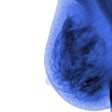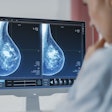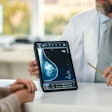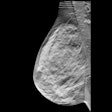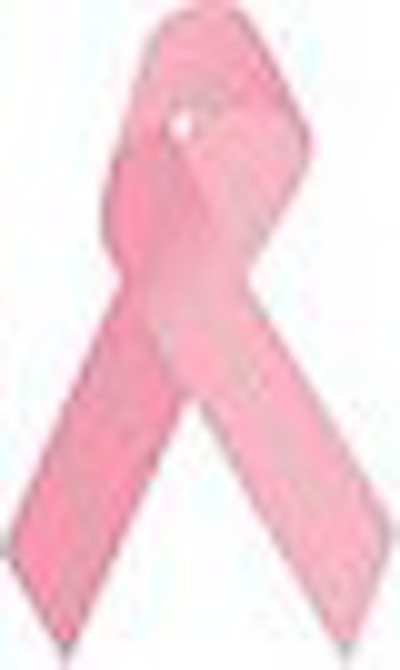
Is an 80-year-old woman in good health a good candidate for screening mammography? A recent Dutch study published in the International Journal of Cancer suggests that age 75 may be an appropriate upper limit for mammography to avoid overtreatment of breast cancers (May 2006, Vol. 118:8, pp. 202-2025).
But others say that a woman's health, not her age, should be the deciding factor in whether she should continue to receive annual mammograms.
"The policy of our office is that no woman is too old that she should stop having mammograms, as long as she is in generally good health," said Valerie Andolina, a radiologic technologist (RT) at the Elizabeth Wende Breast Clinic in Rochester, NY.
"A woman's risk of developing breast cancer increases with age, and as the health of older women has improved due to medical advances, it may be even more important now than ever before for older women to continue having mammograms," Andolina added.
Currently, the American Cancer Society recommends mammograms beginning at age 40 and continuing for "as long as a woman is in good health."
But in some areas, public screening programs may set an age limit on breast cancer screenings due to financial considerations, said Shirley Long of Mammography Consulting Service in Alberta, British Columbia.
The goal of these programs is to provide the maximum benefit for the largest number of women. Age caps are put in place so that limited resources may be spent on women who will presumably get the most benefit from screenings, she said. Public screening programs for other diseases (such as prostate or colon cancer) typically offer screenings for anyone with a 10-year life expectancy, Long added.
Although limitations may be placed on publicly funded screening programs, private insurers typically pay for screenings regardless of a woman's age.
"Our billing department says they have never had payment denied for a woman because of advanced age," said Andolina, although she said she has heard about an insurance company that was considering setting an age cap.
Encourage screening
If no financial restrictions exist and the woman is in good health, your facility should not hesitate to encourage her to continue screenings, Long said.
A recent study in the American Journal of Preventive Medicine showed that less than half of women age 65 or older had a mammogram within the two-year period tracked by researchers. This lack of compliance with screening recommendations should be a focus for mammography facilities (August 2006, Vol. 31:3, pp. 142-149).
Older women can be encouraged to participate in screenings through regular reminders, as well as advertising campaigns reminding them that breast cancer risk increases with age, Long said.
Physicians should also be encouraged to remind women of the importance of screening, she said.
When older women do come in for examinations, taking steps to ensure their comfort is important so they will be inclined to return. The following are five tips that can help when working with elderly patients:
Take care with delicate skin
First, be on alert for skin tears and abrasions. Elderly women's skin can be more fragile than younger women's and is often prone to tearing. Although such skin breaks cannot be completely avoided because of the necessary pressure of the examination, they can be managed. It's important to ensure that equipment is thoroughly cleaned to prevent infections and to offer antiseptic or antibiotic ointment if needed.
Take care, however, not to overemphasize this issue. Most women in this age group are aware of how easily their skin can be damaged, but some may become distressed if reminded of it, Long said.
Allow assistance
It may be helpful to allow elderly women to bring a supportive person with them for the exam. This person can be offered a lead apron, so he or she can stay in the room or watch the exam from behind the control panel.
One important role that this support person can play is to help hold the patient in place after the compression is removed to keep her from jumping back once the pressure is gone. When a woman moves back quickly, she can injure herself on the plates.
Seated or standing?
An elderly patient often needs a seated exam. She may be able to stand for a limited amount of time, but you must first assess her condition before asking her to do so, Long said.
"The patient's safety is the primary consideration and must not be compromised," she cautioned.
Although the patient may sincerely want to help, she may not have a realistic picture of her capabilities and limitations. Therefore, Long suggested asking the following questions to determine the patient's mobility:
- Can you stand up for several minutes unassisted?
- Can you take small steps from side to side?
- Can you raise one arm at a time without losing your balance?
- Do you often walk around your room or home unassisted?
- Do you dress yourself? Getting dressed demands a degree of agility and range of motion similar to that required to perform a standing mammogram.
If the patient hesitates in any way when answering these questions, do not ask her to stand for the mammogram. Proceed with the next best option: the seated mammogram.
The seated mammogram
Before you begin a seated mammogram, ask another RT for help. As with any difficult task, four hands are better than two, Long said.
The extra RT can help adjust the equipment, stabilize the patient, and assist with positioning and compressing the patient's breast. This assistance is invaluable to ensuring efficiency and safety.
If the patient is in a wheelchair, be certain to engage the brakes once you have it in place. If possible, position the patient so her hips are at the back of her chair. If the arms of the wheelchair can be removed, take them off one at a time so the patient can use the remaining arm for support during positioning. Use pillows to support the patient. If the arms of the chair cannot be removed, consider transferring the patient to a mammography-positioning chair or a chair that has adjustable arms and wheels that lock.
If neither of these options is available, perform the mammogram using only the craniocaudal view and lateromedial views, as the mediolateral oblique and lateromedial oblique views will be difficult to perform due to the arms of the chair.
Long considers the 90˚ lateromedial view as the "next best option" to the mediolateral oblique view for patients with physical limitations.
"Your first choice should always be the single projection that can adequately substitute for the routine view that cannot be performed," Long said.
Two critical factors in positioning
When positioning a seated patient, remember the following:
- Keep the patient's back as straight as possible.
- Keep the patient leaning forward at the waist.
Working with seated patients is challenging, but with a little extra attention, these patients can have a successful and reasonably comfortable screening.
By Kelly Bilodeau
AuntMinnie.com contributing writer
October 6, 2006
The "Mammography Regulation and Reimbursement Report" is a 12-page monthly newsletter designed specifically for mammographic technologists and supervisors that is published by HC Pro. The periodical offers ideas for better practice management from peers, billing tips, MQSA regulatory updates and guidance, and business ideas related to breast imaging. For a free trial subscription, please click here.
Related Reading
New workflow, personnel needed for adopting digital mammography, August 10, 2006
Take care when coding for digital mammography and CAD, July 13, 2006
Easing the pressure of compression for patients, June 27, 2006
Digital mammography: Can your facility afford to make the leap? May 11, 2006
MQSA reauthorization: What to expect and how to prepare, April 13, 2006
Copyright © 2006 HC Pro












